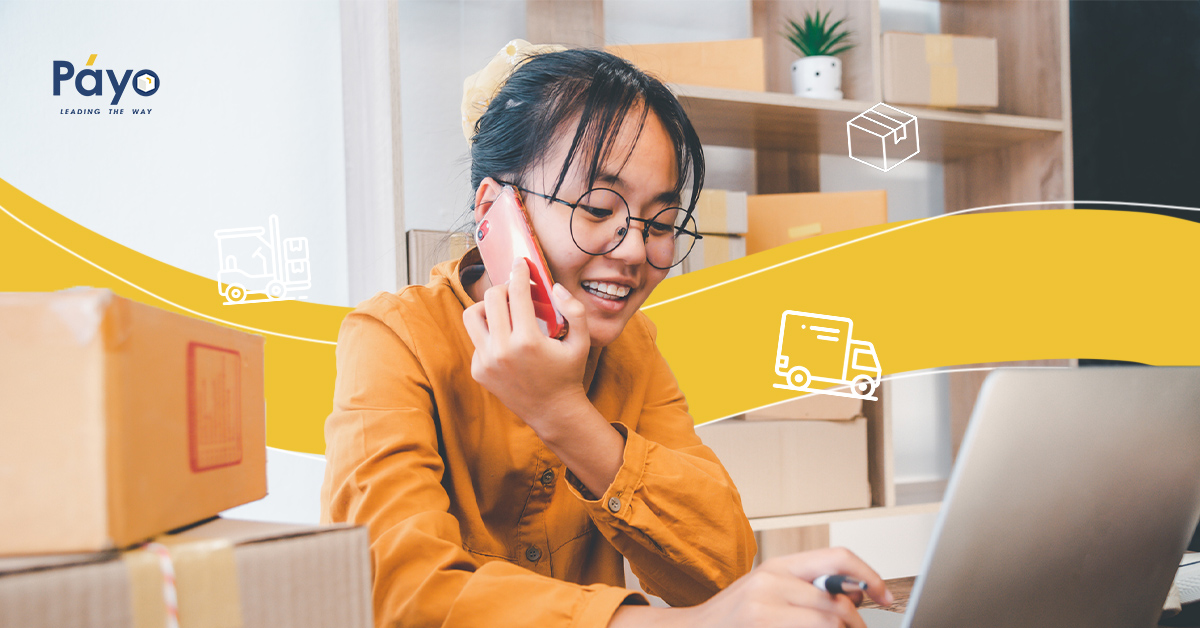

How to manage delivery & logistics for your E-commerce business in the Philippines
As an online business owner, it’s essential to understand the role of delivery and logistics in shaping a customer’s shopping experience.
Why? Because as per a 2021 survey by Zebra Technologies, 73% of online shoppers across Asia, including the Philippines, stated that they would switch brands if delivery services didn’t meet their expectations. It’s clear—effective delivery and logistics can enhance customer satisfaction, promote repeat purchases, and boost your business’s reputation.
The Philippines presents its unique set of challenges. With its archipelagic geography—composed of over 7,000 islands—and often inadequate infrastructure, logistics can become a complex task.
According to a 2022 report by the Asian Development Bank, transport and logistical costs in the Philippines are about 24% higher than the average in Southeast Asia. This stresses the need for local e-commerce businesses to fine-tune their delivery and logistics strategy.
With this guide, we aim to shed light on how you can streamline your operations and overcome logistical roadblocks in the Philippines. We believe that with the right knowledge and strategy, you can turn challenges into opportunities, ultimately helping your E-commerce business thrive.
What is E-commerce Delivery & Logistics?
When a customer places an order on your online store, it kicks off a chain of events known as the order fulfillment process. It starts from the point of sale, goes through the warehouse (picking, packing, and shipping), and ends at the customer’s doorstep.
In the E-commerce world, this entire process falls under the umbrella of ‘delivery and logistics.’ Managing it efficiently can significantly boost your business’s overall performance and customer satisfaction.
Despite challenges (more on this below), there’s a positive trend. The Philippine E-commerce market has been expanding rapidly and this expansion led to an increase in demand for efficient and reliable delivery services.
Delivery companies are adapting to meet the growing demand. They’re investing in logistics technologies and expanding their delivery networks. Cash on Delivery (COD) continues to dominate as the preferred payment method, with 86% of E-commerce transactions were completed using COD.
Key Challenges in Managing Delivery & Logistics for E-commerce in the Philippines
Geographic Challenges
The Philippines, an archipelagic country, poses unique geographic challenges for E-commerce businesses. Delivering goods across 7,000+ islands is no small feat. It requires extensive logistical planning, robust shipping networks, and often, reliance on third-party delivery services.
Infrastructure Challenges
The E-commerce boom is outpacing the development of logistic infrastructures in the Philippines. In many areas, road networks remain underdeveloped and maritime and air transport facilities are often inadequate.
Legal and Regulatory Challenges
Legal and regulatory challenges can add to the complexity of managing delivery and logistics. The Philippines has a myriad of regulations related to E-commerce, ranging from consumer protection laws to data privacy regulations.
Cultural and Consumer Preference Challenges
Lastly, understanding the cultural nuances and consumer preferences in the Philippines is crucial. There’s also a high demand for ‘door-to-door’ delivery, requiring more logistical planning and coordination. Not understanding and catering to these preferences can negatively impact customer satisfaction.
Best Practices for E-commerce Delivery & Logistics in the Philippines
Understanding Customer Expectations
In the E-commerce space, meeting customer expectations can make or break your business.
Take time to understand your customers – their preferred delivery times, preferred payment methods, and their need for tracking options. By aligning your delivery strategy with customer expectations, you can enhance customer satisfaction and build long-term loyalty.
Offering Various Delivery Options
Versatility is key. Offering multiple delivery options – such as door-to-door delivery, same-day delivery, or pickup points – can cater to a wider range of customer preferences.
Flexibility can improve the customer experience and give your business a competitive edge.
Ensuring Timely and Accurate Delivery
Timely and accurate delivery is a cornerstone of a successful E-commerce business. Invest in reliable logistics partners and technologies that can streamline your order fulfillment process. Also, consider implementing quality control measures to minimize errors in order dispatch and delivery.
Effective Communication with Customers
Keep your customers in the loop. Transparency in communication—regarding delivery times, delays, or changes—is essential.
Automated notifications, real-time tracking, and responsive customer service can greatly enhance the delivery experience for your customers.
Warehouse Management Strategies
Effective warehouse management is crucial for smooth logistics operations.
Consider strategies such as optimizing warehouse layout for faster picking and packing, implementing batch processing for large orders, and regularly training your staff on best practices.
Efficient Inventory Management
Maintaining the right inventory levels can prevent stock-outs and overstocks, both of which can negatively impact your bottom line. Implement techniques like demand forecasting, timely reordering, and safety stock management to keep your inventory in check.
Technology Integration
Integrating technology into your logistics operations can significantly enhance efficiency. For example, adopting tracking systems can improve visibility over your delivery process. Automated sorting systems can reduce errors and speed up order fulfillment.
Final Thoughts
The E-commerce landscape in the Philippines is growing and evolving rapidly. It’s crucial to stay ahead of the curve, be aware of the latest trends, and continuously adapt your delivery and logistics strategies to cater to changing customer preferences and market conditions.
Remember, the ultimate goal of your E-commerce business is to meet your customers’ needs and exceed their expectations. By focusing on efficient delivery and logistics management, you are setting the stage for superior customer experiences, which is a key determinant of your business’s long-term success.
If you’re looking for a partner that will help you thrive in E-commerce, Payo is the right choice. We don’t just help you manage delivery and logistics; we also take care of other aspects of your business such as Marketplace Optimization, Live Customer Support, and Advanced Remittance.
To get in touch with us, all you have to do is sign up today or send a message to [email protected]. We look forward to being your partner in E-commerce!

